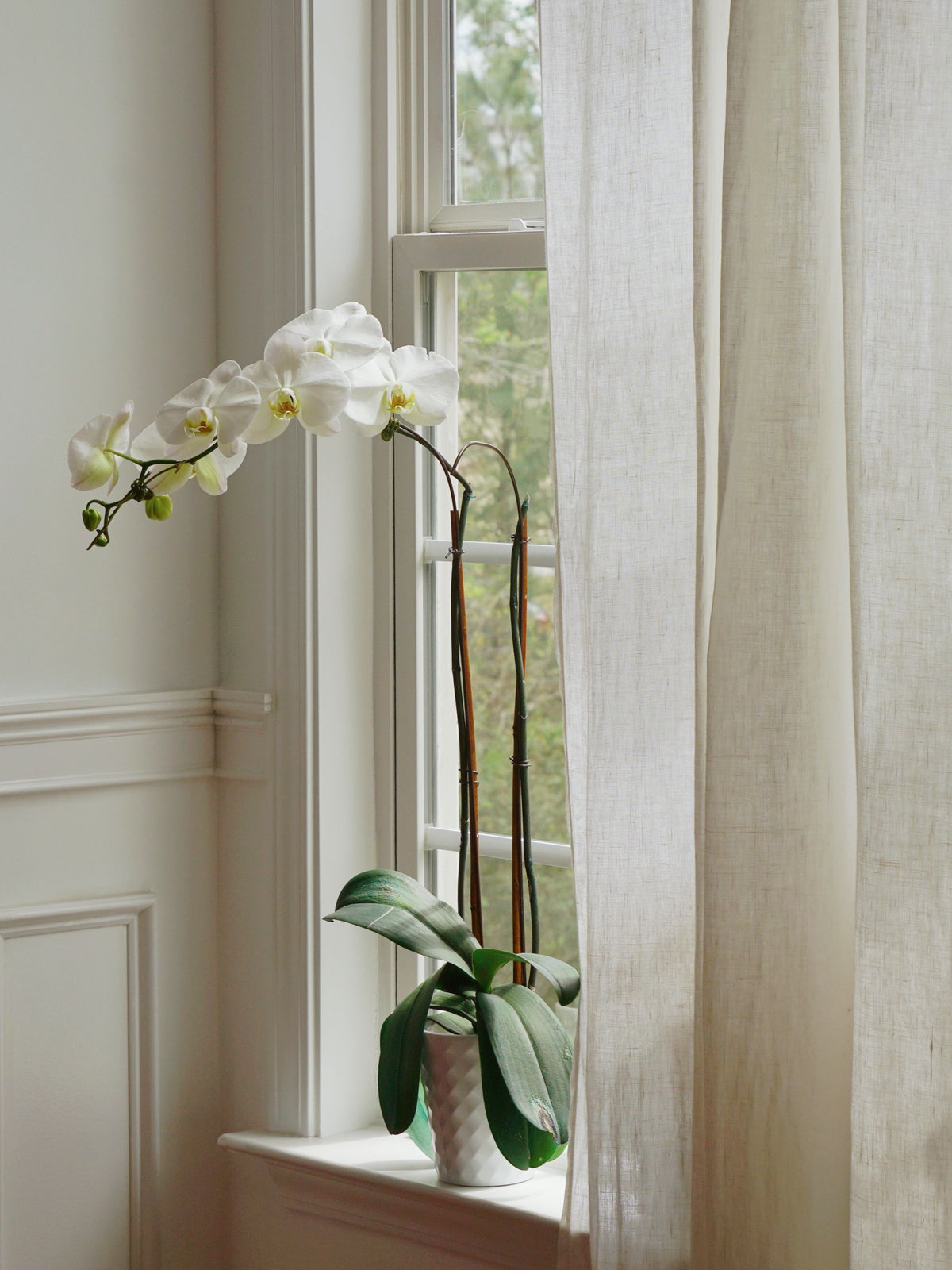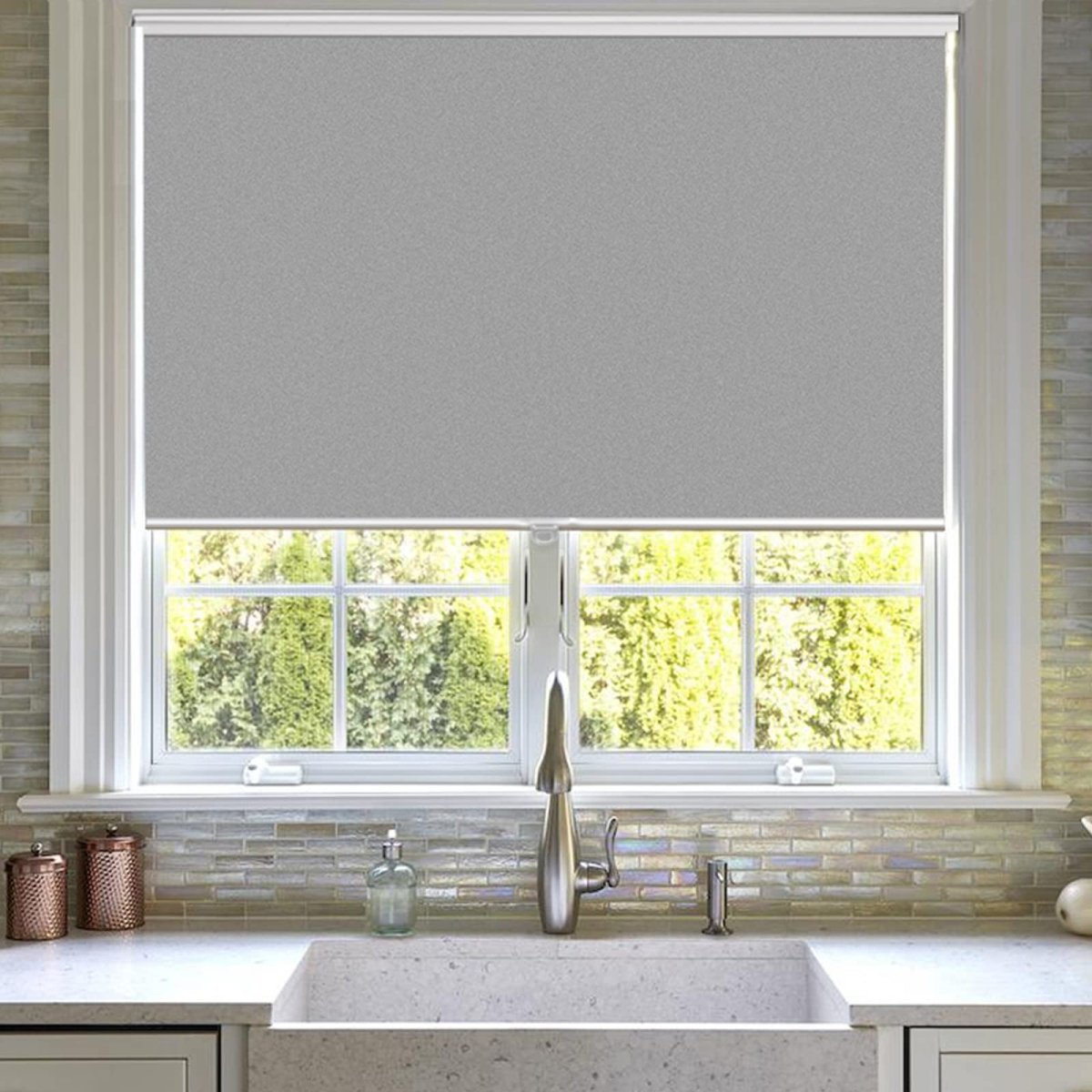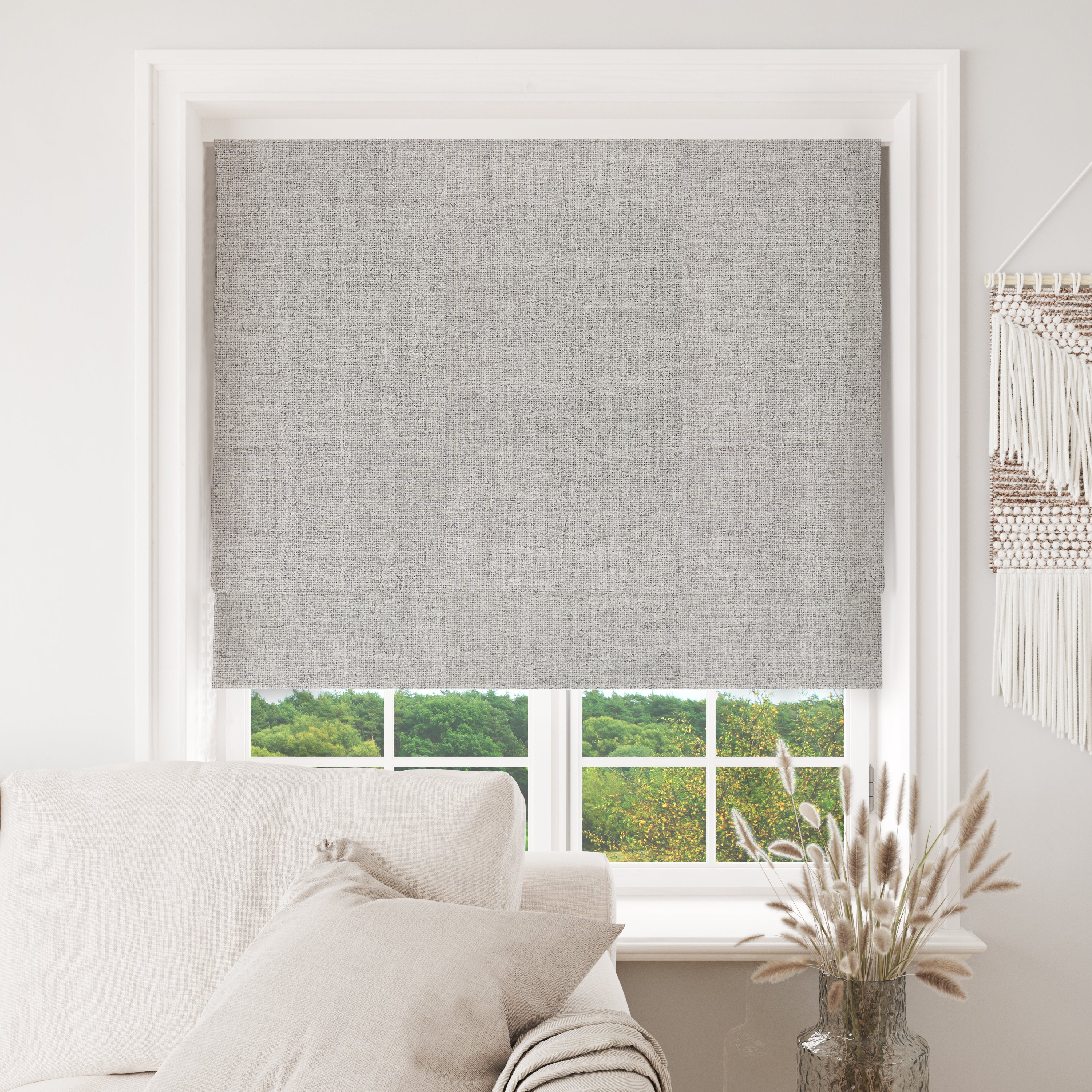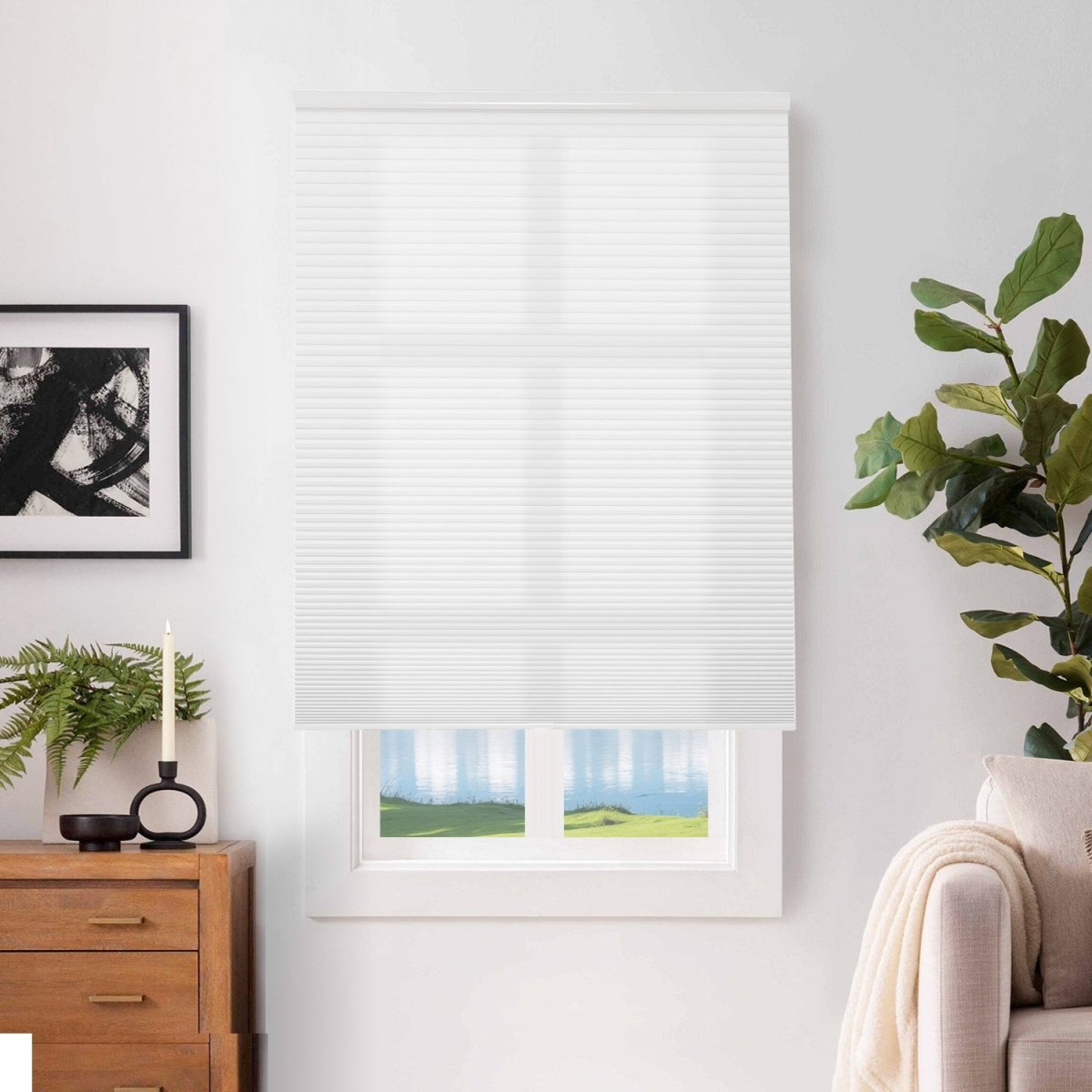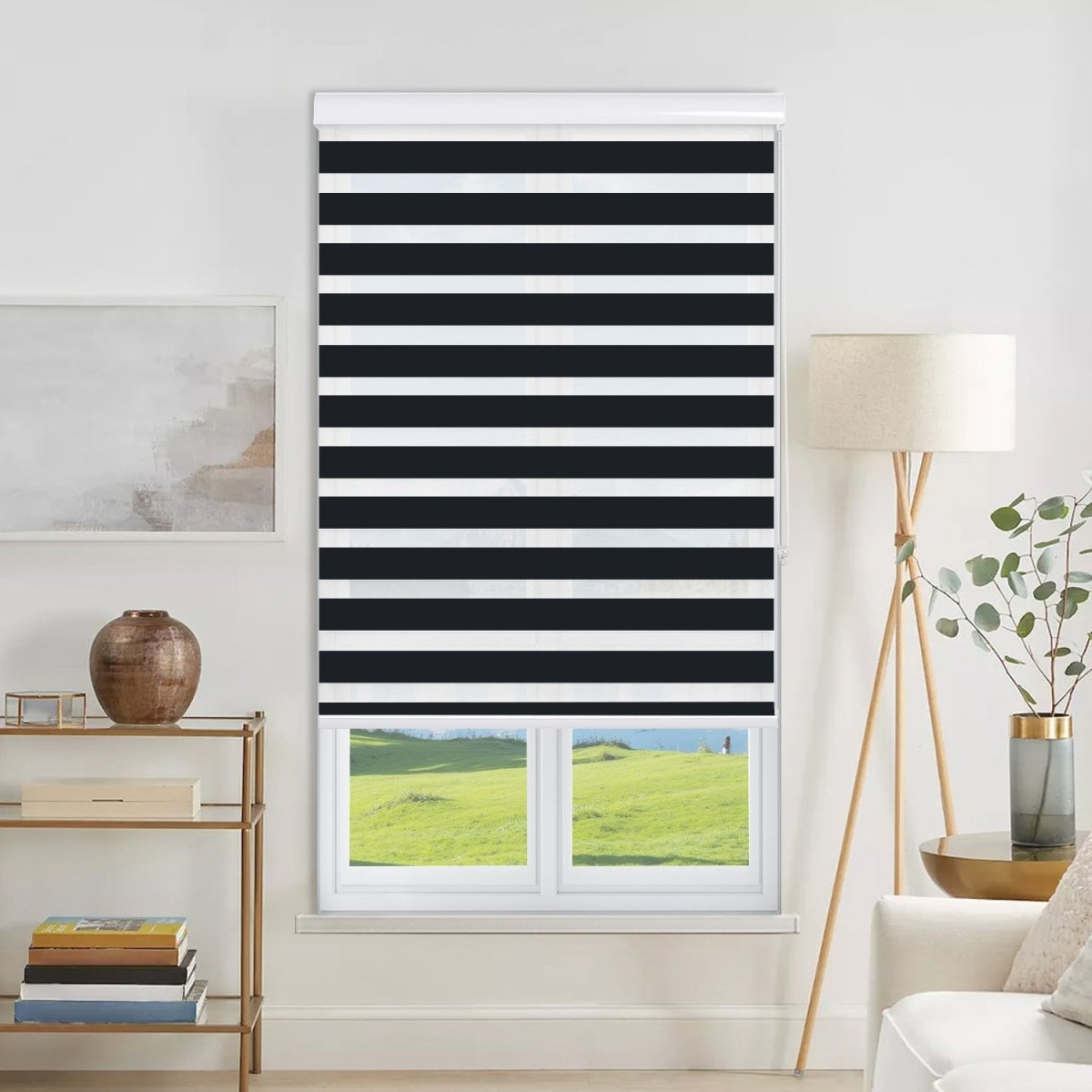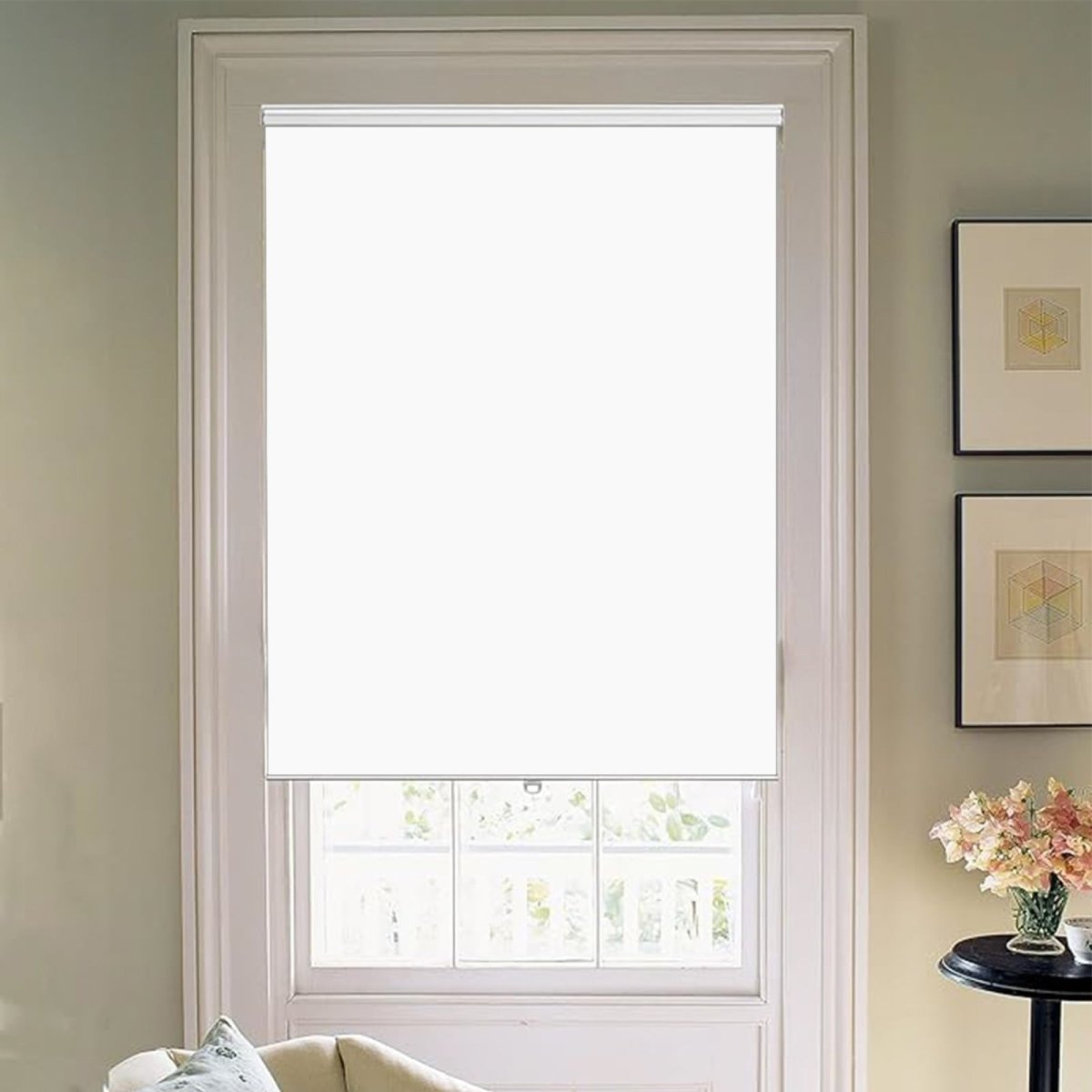You found them—the almost perfect curtains. You hang them up, step back, and... they're two inches too short, grazing your windowsill like high-water pants. Or perhaps the color is right, but the afternoon sun still streams through, waking you from a nap. Off-the-shelf curtains are a game of compromise. This is why so many people are now ordering custom curtains online. And here is your simple guide to get it right.

Measure Windows for a Perfect Fit
Unlike ready-made curtains which are expected to fit most windows but may just inevitably be a little off for yours, custom size curtains fit perfectly for your home, if you measure your window right.
First, grab your tools: a metal tape measure (cloth ones can stretch and give you wrong numbers), a notepad, and a pencil.
Decide on Rod or Track Placement
Before you measure, decide where your curtain rod will go.
A pro tip: Install the rod about 3-6 inches above the window frame. This makes the window feel taller and more dramatic.
For the width, the rod should extend 6-10 inches past the frame on each side. This allows the curtains to "stack back" when open, letting in maximum light and not blocking the glass.
Measure the Width
Once your rod is placed (or you've marked where it will go), measure the full width of the rod, not including any decorative end-caps (finials). If you don't have a rod yet, measure the width of your window frame and add 12-20 inches (6-10 inches for each side) to get your target rod width. This final width is what you will enter into the order form.
Measure the Length (or "Drop")
This measurement determines the entire look of your curtains. Measure from the top of the curtain rod (or bottom of the curtain rings) down to where you want the fabric to end.
You have four classic choices:
- Sill Length: The curtain ends about 1/2 inch above the windowsill. This is a clean, practical look, great for kitchens or windows with a radiator underneath.
- Apron Length: The curtain ends about 1 inch below the bottom of the window frame or "apron." This is a tidy, traditional look.
- Floor Length: This is the most popular and elegant style. The curtain should end about 1/2 inch above the floor. This "floating" style is clean, modern, and prevents the curtains from collecting dust or getting stuck in a vacuum.
- Puddle Length: For a very formal or romantic look, add 1-3 inches to your floor-length measurement. The fabric will "puddle" beautifully on the floor. This is best for low-traffic areas.
Always remember the golden rule: measure twice, order once. Write down your final width and length clearly. Most online brands, like Joydeco, provide detailed video and diagram guides to walk you through this process, so you're never on your own.

Select the Right Fabric and Color
This is the fun part, but it can also be tricky when looking at a screen. The color on your phone might look different from that on your laptop.
Fabric Function First
Your fabric choice isn't just about color; it's about function. What does this room need?
- Sheer: These are light and airy. They don't offer much privacy but are perfect for filtering harsh sunlight while keeping a room bright. They are great for living rooms or kitchens.
- Linen and Cotton Blends: These offer a natural, textured look. They are often "light-filtering," providing privacy while still letting a soft glow through.
- Velvet: This is a heavy, luxurious fabric. It's a fantastic insulator, helping to keep your home warm in the winter and cool in the summer. It's also a natural noise-reducer, making it a top choice for bedrooms or media rooms.
- Blackout: This is a must-have for bedrooms, home theaters, and nurseries. True, high-quality blackout curtains are made with a special lining or a dense weave that blocks 95-100% of light. This is one of the biggest benefits of custom made curtains—you can often add a blackout liner to almost any fabric you love.
The Secret to Color: Get Swatches
Here's our top tip: always order fabric swatches. This is the only way to see the fabric's true color and texture in your home. You can hold it up to your wall paint, see it next to your sofa, and check how it looks in both daylight and at night with your lamps on.
The best online curtain retailers understand this is a critical step. They will mail you physical swatches, often for free or a very small fee, so you can order with total confidence. A digital image can't show you how a fabric will drape or how the light hits its texture. A swatch can.
Understand Fullness and Pleat Styles
This is what truly sets custom curtains apart. Fullness and pleat style are what give curtains their rich, tailored, and professional look, rather than looking like a flat sheet hung on a rod.
What is Fullness?
Fullness is the amount of extra fabric used to create the curtain's folds or pleats. It's expressed as a ratio.
- Standard Fullness (2x): This is the industry standard. It means the curtain panel's flat width is two times the width of your window or rod space. For a 50-inch rod, you would use 100 inches of fabric. This creates lovely, soft folds.
- Luxe Fullness (2.5x or 3x): This uses even more fabric, creating deeper, richer, and more luxurious folds. This is a fantastic choice for formal dining rooms, grand living rooms, or for heavier fabrics like velvet.
When you order custom curtains online, the builder tool will usually calculate this for you. You'll just need to select an option like "Standard" or "Luxe."
Header and Pleat Styles
The "header" is the very top of the curtain, which determines how it hangs from the rod.
- Grommet: Large metal rings are pressed into the fabric. The rod slides through the rings. This creates a very modern look with wide, S-shaped folds. They are very easy to open and close.
- Rod Pocket: A simple pocket is sewn at the top for the rod to slide through. This is a traditional, casual look. The fabric gathers on the rod.
- Back Tab: Loops are hidden on the back of the curtain panel. The rod slides through the loops, creating a clean, floating look with soft pleats in the front.
- Pinch Pleat: This is a classic, tailored style. The fabric is "pinched" and sewn together at the top to create permanent, structured folds that flow down the curtain. It’s elegant and timeless.
The header you choose has a big impact on the final style, so look at examples online to see which one matches your room's vibe.

Navigate the Online Customization Tool
This is where all your choices come together. Don't be intimidated; the best online platforms are designed to be simple and guide you step-by-step.
Here is a typical flow for ordering your custom curtains online:
Select Your Fabric
You'll start by browsing the collection and clicking on the fabric and color you love (after you've confirmed with your swatches, of course!).
Enter Your Dimensions
You will find two boxes: Width and Length. This is where you enter the numbers you so carefully measured earlier.
Choose Your Options
A simple menu will guide you through the rest.
- Header Style: You'll pick from a list (e.g., Grommet, Pinch Pleat, Rod Pocket).
- Lining: You'll choose your lining (e.g., Unlined, Privacy, Blackout, Thermal).
- Fullness: You may see an option for Standard or Deluxe fullness.
- Panels: You will be asked if you want a Single Panel or a Pair (2 Panels). A pair is standard for most windows, as it allows you to open the curtains in the middle.
Review the Price
One of the best features of ordering online is price transparency. As you make your selections, the total price will update instantly. There are no hidden fees or "gotcha" moments.
Add to Cart
Before you click "Add to Cart," open the "Review Details" summary. Read your width, length, header style, and color one last time to make sure it's all correct.
From Order Confirmation to Delivery
You've clicked "Place Order." What happens now? This isn't like ordering a book; your curtains don't exist yet.
- Confirmation Email: You'll immediately receive an order confirmation email. Open it and read it carefully. Most companies have a short 24-hour window where you can still make changes before your order goes into production and the fabric is cut.
- Production: This is the waiting period. Your custom made curtains are being crafted just for you. A team of skilled craftspeople will cut your chosen fabric to your exact dimensions, sew the headers, add the lining, and finish the hems. This process can take anywhere from several days to a few weeks.
- Shipping: Once your curtains pass a final quality inspection, they are carefully folded, packaged, and shipped. You will receive a tracking number so you can follow their journey to your doorstep.
- Delivery Day: Your package has arrived! When you unbox your curtains, they will likely have wrinkles and fold lines from shipping. This is 100% normal.
- Installation and Finishing: Hang your curtains on the rod. To get that perfect, straight-from-a-magazine look, you'll need to remove the wrinkles. A handheld steamer is the fastest and safest way. Gently steam the curtains from top to bottom, and the wrinkles will fall right out. (Always check the fabric's care instructions first; some may prefer a cool iron on the reverse side).
Transform Your Windows with Custom Curtains Today
Ordering custom curtains online transforms your windows from an afterthought into a stunning, intentional feature of your home. By measuring carefully, choosing your fabric wisely (get those swatches!), and understanding your style options, you can get an exact fit and a high-quality product that off-the-shelf options simply cannot match.
Ready to create a space that feels uniquely yours? Explore Joydeco's collection of custom curtains today and take the first step toward a more beautiful home.
5 FAQs about Curtain Essentials
Q1. What's the most common mistake people make when ordering curtains?
First of all, there's a common mistake involving measuring. Make sure to use a metal tape measure. The biggest mistake, other than not using a metal tape measure? Not buying fabric swatches. Sometimes the color or texture you see online isn't what you actually receive.
Q2. Can curtains be 100% blackout?
They can! In fact, true blackout curtains are constructed to incorporate layers or a heat-reflecting coating to prevent any light from entering. But these are not to be confused with "room darkening" curtains. These curtains will block most light but could potentially have small pinholes or allow light to pass through. In those situations where a complete blackout is mandatory (such as home theaters or daytime sleeping), products marketed "100% blackout" are available.
Q3. How can I clean new curtains that are custom-made?
This depends completely on the fabric.
- Some (such as polyester or blends) can be washed using a machine.
- Fine fabrics like velvet or lined curtains should be dry cleaned.
- Always check the care instructions first before you wash. Sometimes you can just use your vacuum's brush attachment to clean off a light dusting.
Q4. Do I need to purchase a single panel or a two-panel set?
In nearly all standard windows you want to use two panels. In this way you can draw them open across the center point to create the classic symmetrical appearance. The single panel can only really be used in specific instances, like sliding glass doors where you want to slide a panel all the way to one side or in tiny windows.
Q5. Just how much fullness do I actually need?
In fact, for most styles, 2x fullness makes for the ideal standard. It provides noticeable folds when closed but doesn't look too bulky when open. In normal circumstances, you should not go beyond 2.5x or 3x unless you want something extremely opulent or dramatic or if you are using very thin sheer materials that would look very sparse with less fullness.

